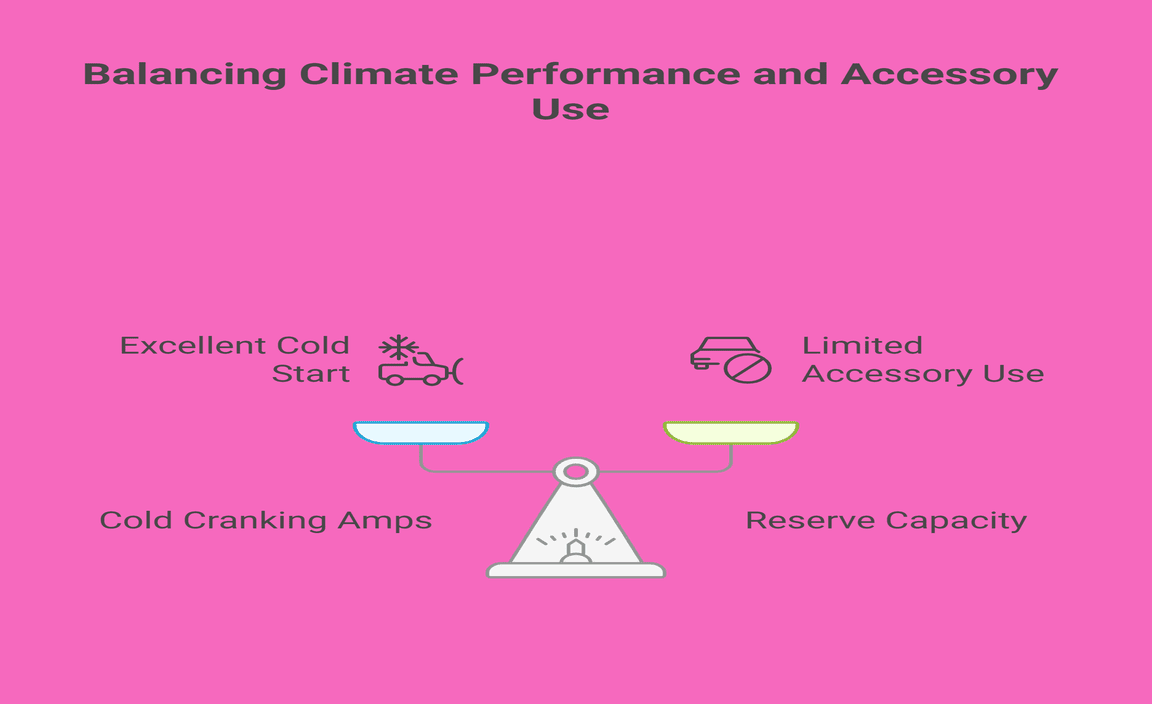Quick Summary: Boost your Peg Perego ride-on toy’s playtime with the right replacement battery! This guide helps you find compatible, safe, and long-lasting batteries, ensuring your child keeps zooming safely for hours. We’ll cover what to look for and how to make the switch easily.
Little ones love their Peg Perego ride-on toys. They’re more than just toys; they’re adventures waiting to happen! But what happens when the fun stops because the battery is drained? It’s a common, frustrating moment for both kids and parents. The good news is that giving these power-packed vehicles a new lease on life is usually quite simple. With the right replacement battery, you can easily bring back those joyful rides and extend playtime. This guide is here to make the process of choosing and installing a new battery as straightforward as possible, so you and your child can get back to fun in no time. Let’s explore how to get your Peg Perego vehicle zooming again!
Understanding Peg Perego Batteries: What You Need to Know
Peg Perego ride-on toys are powered by rechargeable batteries. These are typically sealed lead-acid (SLA) batteries, similar to what you might find in a small motorcycle or a wheelchair. They’re designed to be safe and durable for their intended use. Over time, like all batteries, they lose their capacity to hold a charge and eventually need replacing. This isn’t a sign of a faulty toy, but rather a natural part of its life cycle. Knowing the basics about these batteries will help you pick the perfect replacement and keep your child’s ride-on toy powered up for countless adventures.
Why is understanding the battery so important? Because not all batteries are created equal! Using the wrong type or quality of battery can lead to:
- Reduced run time for the toy.
- Damage to the toy’s electrical system.
- Safety hazards.
- Not being able to find a replacement.
Your goal is to find a battery that matches the original specifications for voltage and capacity, ensuring optimal performance and safety. We’ll break down exactly what to look for.
Identifying the Right Replacement Battery
The most crucial step is to identify the specifications of your current battery. This information is usually printed directly on the battery itself. You’ll be looking for these key details:
- Voltage (V): This indicates the power output. Peg Perego toys commonly use 6V, 12V, or 24V batteries. Ensure your replacement battery has the exact same voltage. Installing a higher voltage battery can permanently damage the vehicle’s motor and electronics, while a lower voltage one won’t provide enough power.
- Amp-Hour (Ah): This rating tells you how much energy the battery can store and deliver. A higher Ah rating generally means a longer run time. You can often opt for a battery with a slightly higher Ah rating than the original, which can provide even more play time!
- Dimensions (LxWxH): Batteries need to fit snugly into the battery compartment. Measure your old battery and make sure the new one is the same size.
- Terminal Type: This refers to the shape and location of the connectors where the wires attach. Most Peg Perego batteries use standard spade terminals.
Where to Find Your Current Battery’s Information
Don’t worry if the writing on your old battery is smudged or faded. Here are a few places to check:
- Directly on the Battery: Look for labels. Often, voltage (V) and amp-hours (Ah) are clearly printed.
- The Toy’s Manual: If you still have it, the owner’s manual will list the original battery specifications.
- Peg Perego Website or Customer Support: You can often find compatibility information on the official Peg Perego site or by contacting their customer service with your toy’s model number.
- Model Number of the Toy: Knowing the exact model of your Peg Perego ride-on (e.g., Gaucho, Polaris RZR, John Deere Tractor) is essential. Many online retailers that sell replacement batteries have search tools where you can input your toy’s model number to see compatible battery options.
For example, a common battery for many Peg Perego 12V vehicles is a 12V 12Ah battery. However, always verify for your specific model. You might find batteries labeled as “F2” or “F1” terminal types, which refer to the width of the spade connectors.
Choosing the Right Replacement Battery: Key Considerations
Once you know what you need, it’s time to select a replacement. Here’s what else to think about:
Brand and Quality
While Peg Perego branded batteries are an option, many high-quality aftermarket batteries will work perfectly and can often be more affordable. Look for reputable brands known for reliable power solutions, such as:
- Sonnenschein
- Yuasa
- Mighty Max Battery
- ExpertPower
Read reviews and choose a battery with a good track record for longevity and consistent performance. A cheaper, no-name battery might seem tempting, but it could fail prematurely, leaving you with a disappointed child and the need to buy another one soon.
Sealed Lead-Acid (SLA) vs. Other Types
Most Peg Perego toys are designed for Sealed Lead-Acid (SLA) batteries. These are maintenance-free, spill-proof, and safe for use in children’s toys. You generally don’t need to consider other types like Lithium-ion for these applications unless specifically recommended by the manufacturer, which is rare for Peg Perego.
Battery Capacity (Ah) – More is Often Better
As mentioned, Amp-Hour (Ah) determines how long the battery can provide power. If you find a replacement battery with the correct voltage and dimensions but a higher Ah rating (e.g., upgrading from a 10Ah to a 12Ah or 15Ah), this can actually be a good thing! It means the toy can run for longer on a single charge. Just ensure the physical size of the battery remains the same or fits comfortably within the battery bay.
Warranty
A good warranty is a nice sign of a manufacturer’s confidence in their product. Look for batteries that come with at least a 6-month to 1-year warranty, especially for higher-capacity batteries. This provides peace of mind and protects your investment.
Where to Buy Replacement Batteries
You have several options for purchasing your Peg Perego replacement battery:
Online Retailers
This is often the easiest and widest-reaching option. Websites like Amazon, BatteryDirect.com, DiscountBattery.com, and even specialized toy parts sites offer a vast selection. They often have search functions that allow you to find batteries by your Peg Perego model number.
Local Battery Stores
Check for specialty battery shops in your area. They can be a great resource for matching exact specifications and might have brands you won’t find online. Plus, you can often walk out with a battery the same day.
Authorized Peg Perego Dealers
While often the most expensive option, purchasing directly from an authorized dealer ensures you get a genuine Peg Perego battery that is guaranteed to be compatible. This is a good choice if you prioritize OEM (Original Equipment Manufacturer) parts above all else.
Safety First: Handling Batteries
Batteries, especially lead-acid ones, require a bit of care. Here are essential safety tips to follow:
1. Always Disconnect Power First
Before attempting to remove or install a battery, ensure the ride-on toy is completely turned off and the charger is unplugged. It seems obvious, but it’s a critical first step.
2. Wear Protective Gear
Even though these batteries are sealed, it’s wise to protect yourself. Wear safety glasses to shield your eyes from any accidental sparks or debris. Gloves can also be helpful for a better grip and to keep your hands clean.
3. Avoid Short Circuits
Never let metal objects (like tools or jewelry) touch both battery terminals at the same time. This can create a short circuit, leading to sparks, heat, and potential battery damage or injury. Always remove jewelry like rings and watches before working with batteries.
4. Handle with Care
Batteries can be heavy. Lift them properly to avoid strain or dropping them. Though sealed, dropping a battery can sometimes cause cracks or internal damage.
5. Proper Disposal
Old lead-acid batteries are considered hazardous waste and should not be thrown in your regular trash. Most places that sell batteries (auto parts stores, battery shops, electronics stores) have recycling programs. You can also check with your local municipality for hazardous waste disposal sites. Proper recycling helps protect the environment.
How to Replace the Peg Perego Battery: Step-by-Step Guide
Replacing the battery in most Peg Perego ride-on toys is a straightforward process that usually doesn’t require special tools. Here’s a general guide. Always refer to your specific toy’s manual if available.
Step 1: Locate the Battery Compartment
The battery compartment is typically found under the seat of the ride-on toy. You might need to lift or remove the seat to access it. Some models might have a panel that needs unscrewing. Check your manual for the exact location and access method.
Step 2: Disconnecting the Old Battery
Once the battery is visible, you’ll see wires connected to its terminals. These are usually held on by small nuts or screws. Use a small wrench or a screwdriver of the appropriate size to loosen and remove these connections. Pay attention to which wire was connected to which terminal (usually a red wire for positive (+) and a black wire for negative (-)). It’s often helpful to take a quick photo with your phone before disconnecting anything!
Here are the tools you might need:
- Screwdriver set (Phillips head and flat head)
- Small wrench or socket set (commonly 7mm, 8mm, or 10mm)
- Safety glasses
- Gloves (optional)
- Wire cutters/strippers (rarely needed, but good to have handy if wires are damaged)
Step 3: Removing the Old Battery
With the wires disconnected, the old battery can be lifted out of its compartment. It might be held in place with a bracket or strap. Remove any restraints, then carefully lift the battery out. Remember, it might still have some residual charge, so handle it with care.
Step 4: Installing the New Battery
Place the new battery into the compartment, ensuring it sits securely. If there was a bracket or strap, reattach it to hold the new battery firmly in place. Make sure the terminals on the new battery are oriented correctly to match where the wires will reach.
Step 5: Connecting the New Battery
Reconnect the wires to the new battery terminals. This is where your photo or memory comes in handy. Connect the red wire (positive, +) to the positive terminal, and the black wire (negative, -) to the negative terminal. Tighten the nuts or screws securely, but don’t overtighten, as this can strip the threads or damage the terminals.
Step 6: Test the Ride-On Toy
Before putting everything back together, it’s a good idea to test the toy. Turn it on and see if the motor engages and the lights (if any) work. If everything powers up correctly, you can now reassemble any panels or replace the seat.
Step 7: Charge the New Battery
Your new battery will likely have some charge, but it’s best to give it a full initial charge. Use the charger that came with your Peg Perego toy. Refer to the charger’s instructions for the recommended charging time. For most SLA batteries, a full charge is essential for optimal performance and battery lifespan.
Peg Perego Battery Specifications Comparison
To help you visualize, here’s a comparison of common battery types you might encounter for Peg Perego toys. Always confirm with your specific model’s requirements.
| Battery Feature | Common 6V Peg Perego | Common 12V Peg Perego | Common 24V Peg Perego (Often two 12V) | Aftermarket Replacement Notes |
|---|---|---|---|---|
| Voltage | 6 Volts | 12 Volts | 24 Volts (typically two 12V in series) | Must match original voltage exactly. |
| Typical Ah Range | 4.5Ah – 7Ah | 7Ah – 12Ah | (per 12V battery) 7Ah – 12Ah | Can often use a higher Ah for longer playtime if dimensions fit. |
| Battery Type | Sealed Lead-Acid (SLA) / AGM | Sealed Lead-Acid (SLA) / AGM | Sealed Lead-Acid (SLA) / AGM | Stick to SLA/AGM for safety and compatibility. |
| Terminal Type | F1 or F2 Spade Terminals | F1 or F2 Spade Terminals | F1 or F2 Spade Terminals | Ensure terminals match your toy’s connectors. Usually F2 (0.250 inch wide). |
| Physical Size | Varies by toy; confirm dimensions | Varies by toy; confirm dimensions | Varies by toy; confirm dimensions | Must fit snug in the battery bay. Measure carefully. |
| Charger Compatibility | Requires a 6V Peg Perego charger. | Requires a 12V Peg Perego charger. | Requires a 24V Peg Perego charger (or two 12V chargers). | Always use the charger specified for the battery’s voltage. Using the wrong charger can be dangerous and damage the battery. |
Charging Your New Peg Perego Battery
Once your replacement battery is installed, proper charging is key to its longevity and performance. Peg Perego ride-on toys come with specific chargers designed for their battery systems. It’s vital to use the correct charger for your battery’s voltage. A 6V battery needs a 6V charger, a 12V battery needs a 12V charger, and a 24V system needs a 24V charger (or two 12V chargers managed correctly).
Here are some charging best practices:
- Initial Charge: Always give a new battery a full charge before its first use. This helps condition the battery for optimal performance.
- Full Cycles: Try to charge the battery fully each time. Partial charges can sometimes reduce the battery’s overall lifespan over many cycles.
- Don’t Overcharge: Modern Peg Perego chargers are designed to stop charging when the battery is full, preventing overcharging. However, it’s still a good idea to disconnect the charger once the indicator light shows a full charge, or within the recommended charging time (usually 8-12 hours for SLA batteries). Leaving a battery on a charger for days on end isn’t necessary and can sometimes degrade the battery faster, though less so with smart chargers.
- Charge After Use: If your child has a long play session and drains the battery significantly, charge it soon after. Don’t let a deeply discharged battery sit for extended periods.
- Storage: If you need to store the toy for an extended period (e.g., over winter), charge the battery about halfway full before storing it. You may need to top it up occasionally every few months to maintain its health.
- Ventilation: Charge the battery in a well-ventilated area. While SLA batteries are sealed, charging can release small amounts of hydrogen gas, so avoid charging in enclosed, unventilated spaces.
You can learn more about battery charging and maintenance best practices from resources like the Department of Energy, which discusses battery technologies and care.
Troubleshooting Common Issues
Even with a new battery, you might encounter a few hiccups. Here’s how to address them:
Toy Isn’t Working After Battery Replacement
- Check Connections: Double-check that the red wire is on the positive (+) terminal and the black wire is on the negative (-) terminal. Ensure the connections are snug.
- Battery Charge: Is the new battery fully charged? Try charging it for the recommended initial period.
- Fuse: Many ride-on toys have a small fuse that can blow if there was a short circuit or power surge. Check your manual for the fuse location and inspect it to see if it needs replacing.
- Toy Issue: If all connections and charge are good, there might be an issue with the toy’s motor, wiring, or control board



